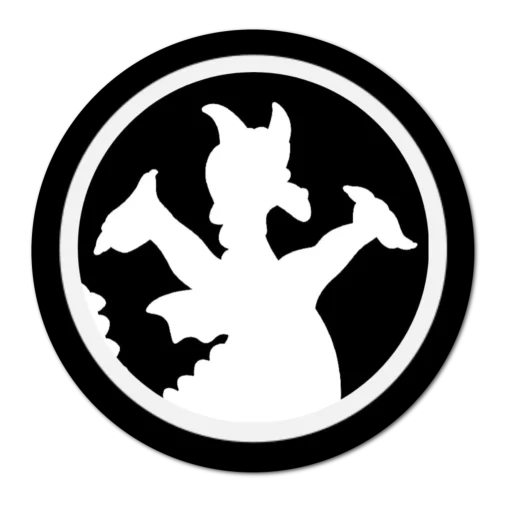(A version of this article was shared with Pirates & Princesses and published on November 15, 2023.)
“Hooray for Hollywood!”
Since the days of silent films, cinematic stories have faithfully transported viewers from their own lives to another world (at least for a couple hours at a time). While those precious movie theater moments provide a welcome break from the stresses of “real life”, it is also interesting to learn how some of our favorite stories are immortalized on film. In this edition of Dearly Departed Disney, let’s peek behind the curtain and explore some of the moviemaking magic Disney staged for guests, beginning with the Backstage Studio Tour and ending with the Studio Backlot Tour.
In the Beginning…
The 1980s were a time of great expansion for Walt Disney World. EPCOT Center opened to guests on October 1, 1982, exactly eleven years after Magic Kingdom first opened to the public. From there, Disney’s most innovative theme park continued to develop and evolve, adding several more pavilions in both World Showcase and Future World.
One of EPCOT’s new pavilion ideas was to be based on Hollywood. It would present the glory days of American cinema. The idea for the pavilion didn’t fit neatly into either of EPCOT’s regions, but newly-assigned Disney CEO Michael Eisner wanted to explore the concept further.
Hello, Neighbor!
While Disney was mulling over the Hollywood concept, a new neighbor moved in down the street. Movie studio powerhouse Universal announced plans to build a new theme park in Orlando, just a few miles away from Walt Disney World. According to Universal’s announcement, the new park would give guests on the east coast the chance to experience the movies, and catch a glimpse of life on a movie lot.
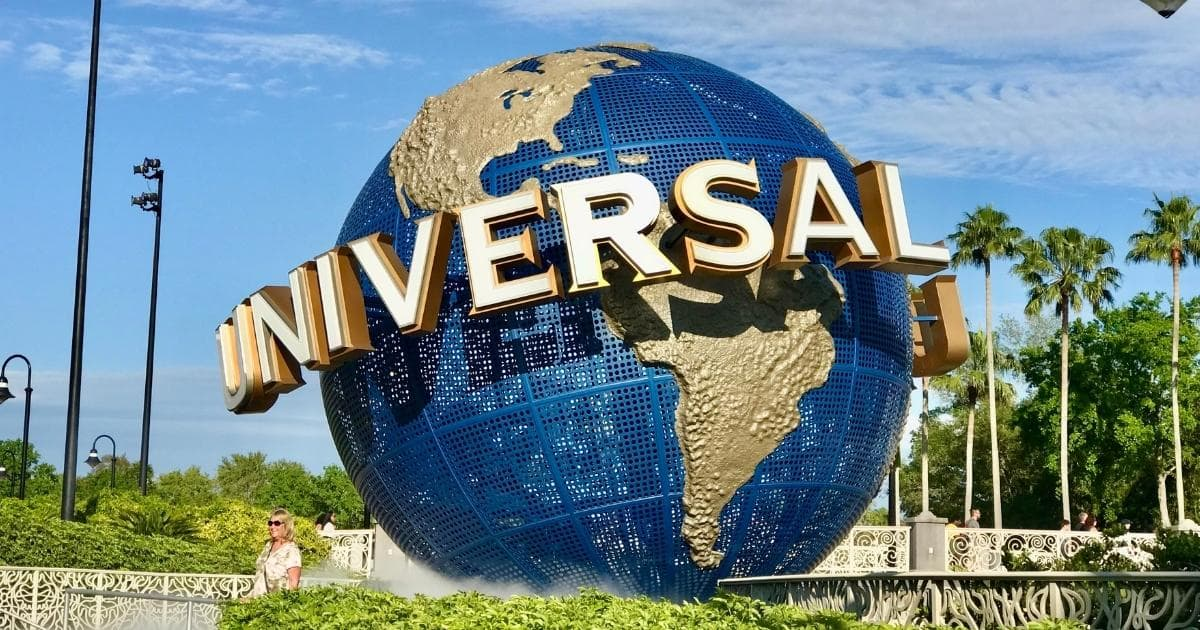
Just like that, Eisner found the solution to his Hollywood problem within the adversity of a direct competitor. In response to Universal’s announcement, Eisner fast-tracked an idea much larger than that which Disney had previously considered. The Hollywood “pavilion” would become a theme park in its own right. Disney partnered with film giant MGM Studios, and hastily developed Disney-MGM Studios.
Walt Disney World’s third theme park opened on May 1, 1989 – a full year before Universal opened their first Orlando theme park. Disney-MGM Studios was envisioned to provide guests with a celebration of the movies, from both sides of the camera, and as such had two anchor attractions. The Great Movie Ride – tucked behind a full-scale replica of Grauman’s Chinese Theatre – treated guests to a taste of many iconic American film scenes. Conversely, the Backstage Studio Tour took guests behind the scenes to examine many different facets of moviemaking.
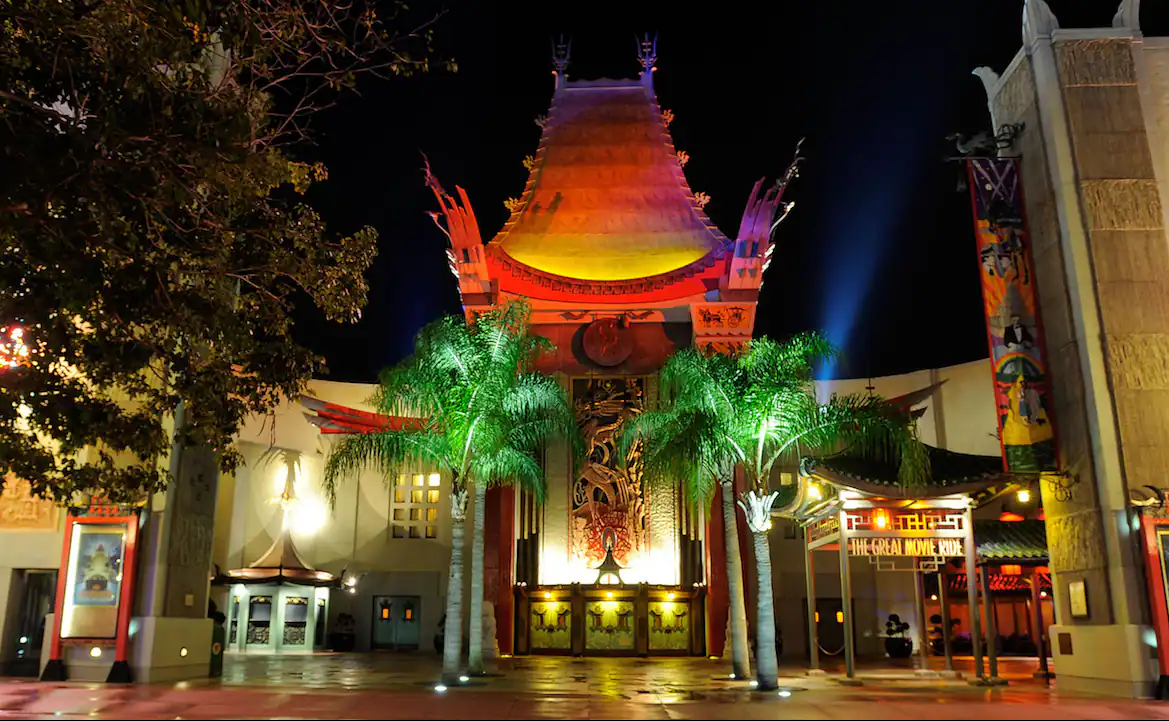
Disney’s Backstage Studio Tour
Welcome to the movies! Got a couple hours to spare? That’s how long the original incarnation of the Backstage Studio Tour took guests to complete. Let’s walk (and ride) through the attraction as it originally operated, then we’ll chronicle the transformation of this gigantic two-hour tour into the modest-sized thirty minute experience it was reduced to prior to its closing in 2014.
Pre-Show
The Backstage Studio Tour’s pre-show was a little more like “queues with character.” Guests waited in four different lines underneath a large canopy, which boasted props from several different Disney films, including Pirates of the Caribbean: The Curse of the Black Pearl, Pearl Harbor, The Rock, and Armageddon. With the exception of Pirates of the Caribbean, all of these films were directed by Michael Bay. This comes as no surprise, since the queue area also featured a film loop, narrated by Michael Bay, showing guests how some of the special effects scenes from Pearl Harbor were filmed. It’s also worth noting that four volunteers were plucked from the queue area to participate in a portion of the attraction to come later.
The Tram Ride
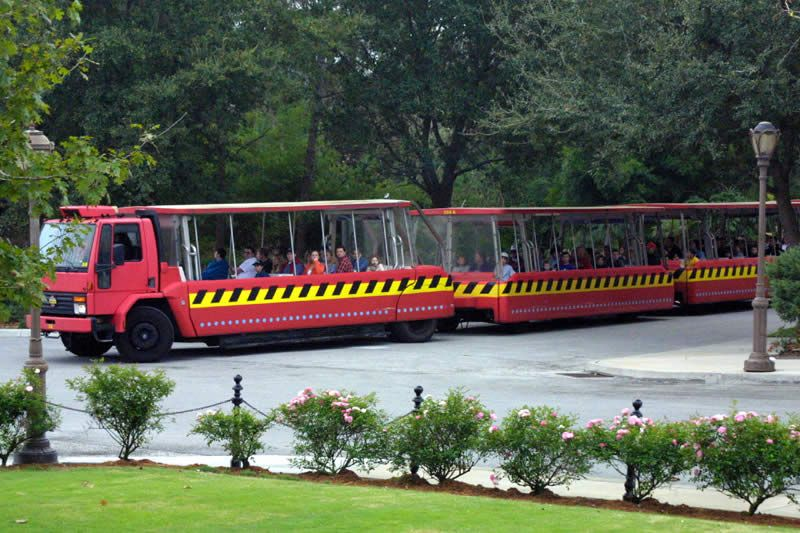
After getting through the pre-show queue, guests boarded shuttles at the Backstage Shuttle Station. The first stop along the tour was the production center where guests would see several facets of film production. Let’s explore them here.
Costuming and Scenic Shop
This was the area where Cast Members would create outfits and sets that would be used in various places around the Walt Disney World property. In a park map from 1989, Disney billed the scenic shop as “If it’s in the script, here’s where the studio craftsmen will build it.”
Residential Street and New York Street
Once out of the design area, guests would coast down Residential Street, taking in the exterior sights of houses from classic sitcom shows like The Golden Girls and Empty Nest, as well as films like Splash Too and Ernest Saves Christmas.

Moving on to New York Street, guests traveled by the busy storefronts, offices, residential buildings, and subway stops of downtown New York. Of course, there were no people or vehicles roaming the street, other than the tour trams, so the street had a slightly creepy abandoned feel of an apocalypse. But forced perspective was on full display here, convincing guests they are surrounded by taller buildings and a street that went on for miles.
The Boneyard
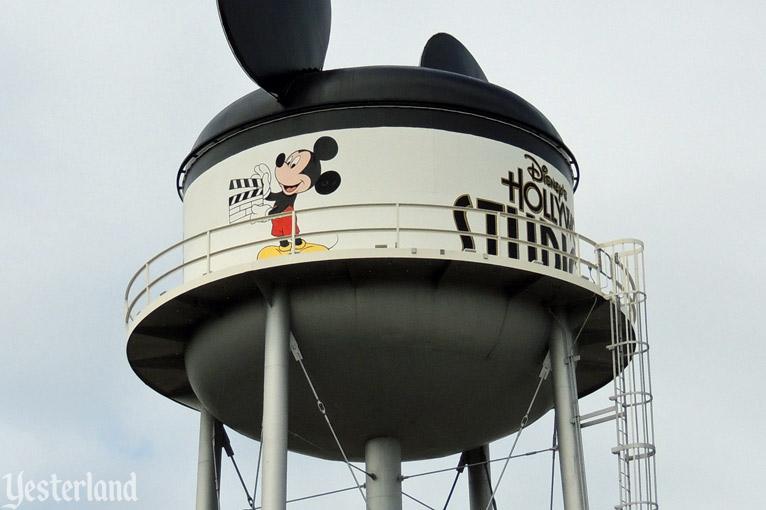
Sprinkled along the tram’s route were stretches spotlighting the park’s “greens department” with character-shaped topiaries, and a “Boneyard” filled with prop vehicles from different films and television shows. Guests could spy Judge Doom’s Dip machine from Who Framed Roger Rabbit, ships from the original Star Wars franchise, and motorcycles from Indiana Jones and the Last Crusade. This route through the Boneyard offered the best view of the Earffel Tower (the park’s original icon) and a sentimental favorite – Walt Disney’s private plane – N234MM (where the MM stands for Mickey Mouse).
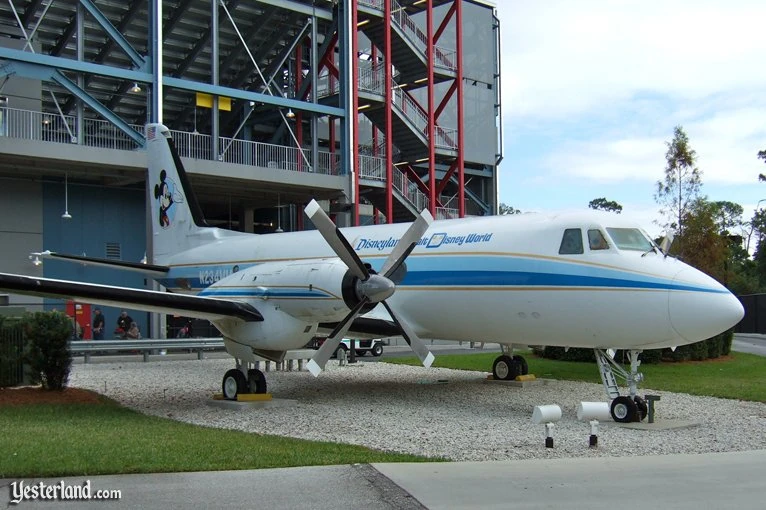
Catastophe Canyon
The last stop on the tram tour was a worthy finale. Catastrophe Canyon was an experience that simulated popular movie disasters. Guests would shake in an earthquake, witness falling power lines and the fiery explosion of a fuel tanker truck, and even survive a massive flash flood from a breached water tower.
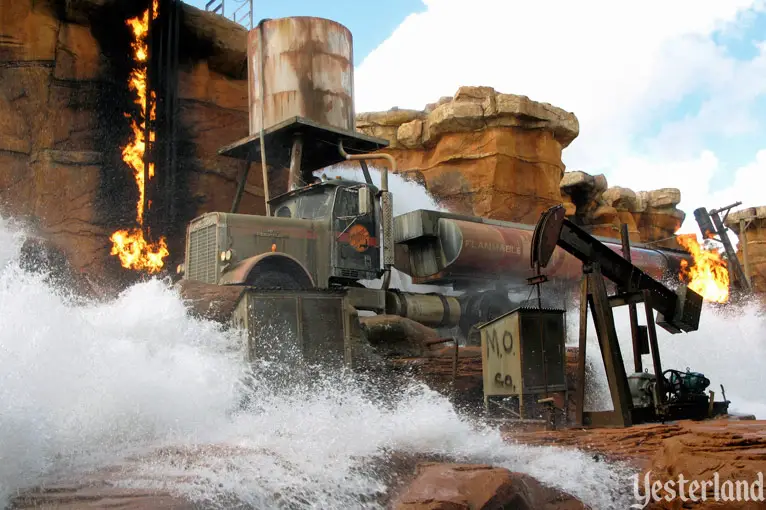
Guests could literally feel the heat from the flames and the mists from the splashes. This energetic demonstration never failed to satisfy!
The Walking Tour
As Indiana Jones said in Indiana Jones and the Temple of Doom, “We walk from here.”
After completing the tram tour, guests put their feet back on the ground and got a mid-attraction break before embarking on the walking portion of the experience. This midway point offered bathrooms, shops, and food, to re-energize guests for the second half of the tour.
Water Effects Tank
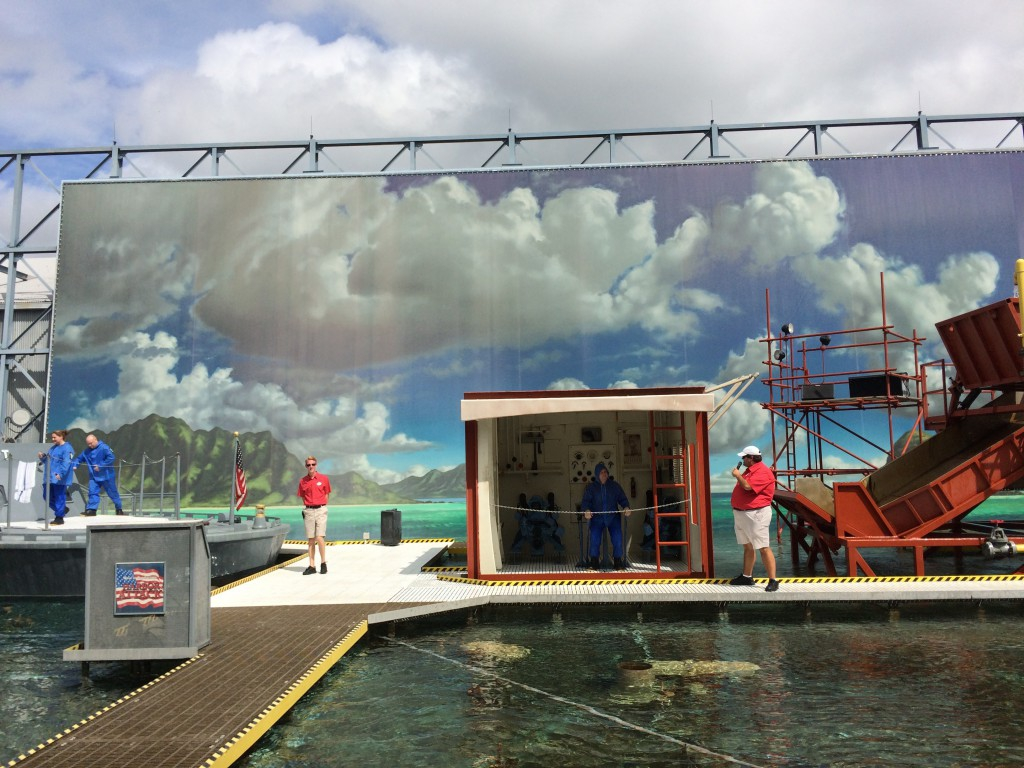
The Water Effects Tank was located in an outdoor area, and sported props setting the scene for Disney’s film Pearl Harbor, including the deck and engine room of a patrol boat. While Cast Members explained how the water and props could be used in filming scenes from action films, those volunteers plucked earlier from the pre-show queue were set up to participate in a filming demonstration. One lucky volunteer sat in the engine room and was swamped by a deluge of about a thousand gallons of water. The other three volunteers stood on the deck during a simulated attack. Underwater explosions, simulated torpedo bursts, and fireballs added an alarming amount of realism to the simulation. After filming was completed, the footage was edited together, along with previously recorded footage of airplane attacks and dialogue. The final film was then shown to the guests, to amusing delight.
Special Effects Workshop and Shooting Stage
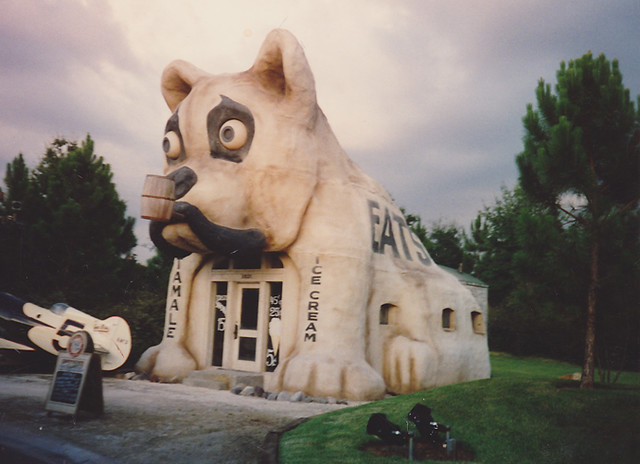
This is the area where TV and movie productions were planned to take place, as the 1989 park map invited guests to “Explore the fascinating science of optical and mechanical effects.” Unfortunately, the production facilities failed to take off as a “real movie studio”, and guests often saw empty spaces on the shooting stage portion of their walking tour. But there were fun set pieces to enjoy, from films such as The Santa Clause (starring Disney Legend Tim Allen), Honey, I Shrunk the Kids, and The Rocketeer.
Post Production Editing and Audio
This portion of the walking tour exposed guests to the area where editors, sound engineers, and other technicians add the finishing touches to films and television shows. Similar to the shooting stage before, the post production area was often uninhabited when there were few films and shows actually being produced here.
The Walt Disney Theater
The final stop on the walking tour was the Walt Disney Theater, where guests could enjoy sneak peeks of upcoming Disney films. Think of this as the happy ending to the tour, and a reminder to head to your local movie theater soon.
Attraction Editing
The whopping two-hour tour of the original Backstage Studio Tour saw many “edits” over the years, trimming the experience from a once-robust two hours down to a scant thirty minutes.
The first of these edits was the removal of New York Street from the tour only months after the attraction opened. Due to the popularity of this portion of the tour, combined with the need for guests to have more places to roam freely within the park, New York Street was split off from the tour, enhanced with another street reflecting the landscape of San Francisco, and renamed the Streets of America.

Within two years of the attraction’s opening, the attraction was officially split into two separate portions, each with its own entrance. A 1991 park guide book listed the “Backstage Studio Tour featuring Catastrophe Canyon” as a “30-minute shuttle ride”, while the walking portion was billed as ”Inside the Magic: Special Effects and Production Tour.” At this point, the sum total of both experiences was a little over an hour in length.
In 1990, the Walt Disney Theater was removed from the walking tour and transformed into Here Come The Muppets, featuring favorite Muppet characters. As the photo shows, the Muppets participating in the show were all “human-sized” and a little unnerving as a result. How can Kermit be anything other than two-feet tall (unless he’s a balloon in the Macy’s Thanksgiving Day Parade)?

Less than a year and a half later, Here Come the Muppets was replaced with The Voyage of the Little Mermaid, which enjoyed a much longer run of over 28 years.
By 1994, guide maps listed the Backstage Studio Tour as a “25-minute shuttle ride” and Inside the Magic as a “35-minute tour.” The trimmed attractions worked out fine however, considering the park had grown in size, adding Sunset Boulevard and Twilight Zone Tower of Terror. With the film and television production facilities failing to find their footing as a real studio, the transformation of Disney-MGM Studios from a studio park to a more immersive theme park had begun.
Studio Backlot Tour
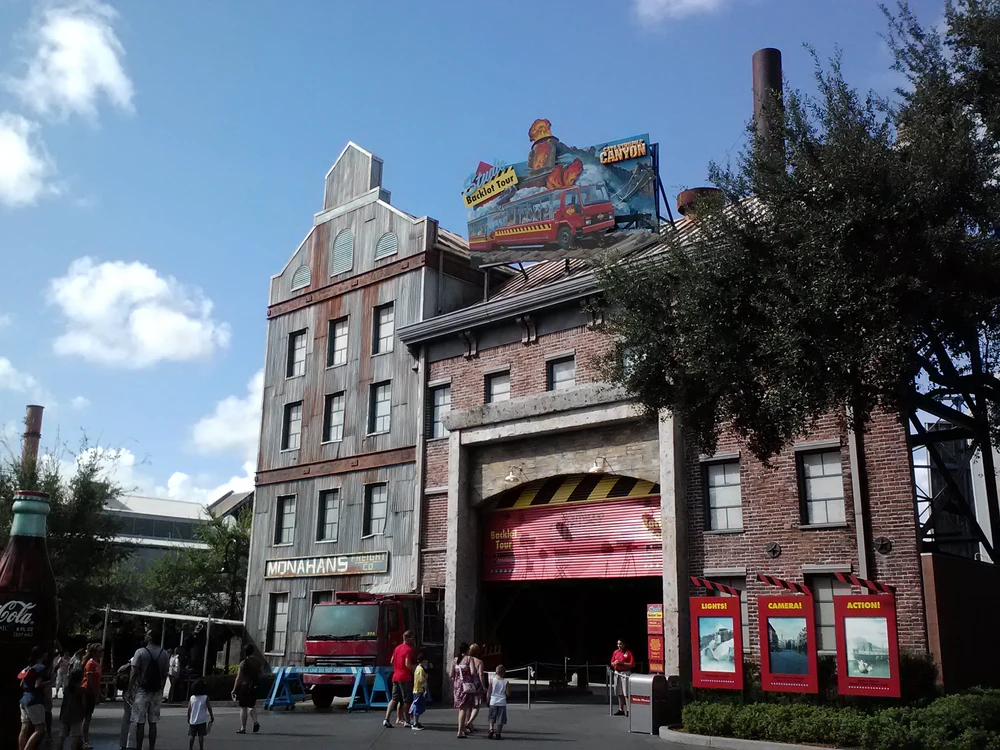
As the 1990s moved on, the Backstage Studio Tour was renamed the Studio Backlot Tour. But the attraction wasn’t simply renamed – it added the water tank special effects experience to the front of the tour, followed by the tram portion. A nice end-cap to the tour was a museum exhibit based on the American Film Institute (AFI) 50 Greatest Villains. Many of the villains on the list were represented with life-sized figures in display cases, with drawings and pictures of them from their films.
The Inside the Magic walking tour was renamed Backstage Pass. At this point, the tour combined the special effects shop with the soundstage displays and demonstrations, including sets from Disney movies or TV shows like 101 Dalmatians (1996 live-action film) and Home Improvement. Backstage Pass limped along for about five years, closing in 2001.The spaces occupied by Backstage Pass were repurposed into the show-type attractions Who Wants to be a Millionaire – Play It and Journey into Narnia, as well as the fan-favorite attraction Toy Story Mania.
Lights, Camera, Destruction!
The Studio Backlot Tour shrunk even further in 2003, as Residential Street was removed to make way for Lights, Motors, Action! Extreme Stunt Show, which ran from 2005 to 2016. While the stunt show still was impressive and had the DNA of the original studio park concept, it left the tram tour with only the Costuming and Scenic Shop, Catastrophe Canyon, and miscellaneous Boneyard props along the route.
In 2008, Disney changed the name of the theme park from Disney-MGM Studios to Disney’s Hollywood Studios. While the word “studios” remained a part of the park’s name, the concept of including working studio components continued to fade. The tour limped along for another six years, with the live cast member tour guide interaction being replaced by a pre-recorded program. On September 27, 2014, the Studio Backlot Tour was closed for a “temporary refurbishment.” Unfortunately for many studio-loving fans, the temporary refurbishment became a permanent closure when Disney announced the development of Toy Story Land and Star Wars: Galaxy’s Edge at that year’s D23 Celebration.

This closure proved to be the writing on the wall, hinting at the end of the whole movie studio concept. The final nail in the coffin was the 2017 closure of The Great Movie Ride, which was replaced by Mickey and Minnie’s Runaway Railway. While a portion of the park remains a celebration of classic Hollywood, surrounding areas are now rethemed to offer guests stories set in more immersive film settings.
Beyond the Boneyard
The Backstage Studio Tour and Studio Backlot Tour are no longer part of Disney’s Hollywood Studios, but nods to this original park attraction can be found, if you know where to look.
Have you visited Disney’s Wilderness Lodge? The old mining equipment found around the resort’s Boulder Ridge Cove Pool was repurposed from Catastrophe Canyon.
Walt Disney’s Plane was given a complete refurbishment, shown to adoring guests at 2022’s D23 Expo, and now resides at Palm Springs Air Museum, about 100 miles east of Los Angeles.
Movie History
Every good Hollywood story comes to an end, and the Backstage Studio Tour is no exception.
Fans of the tour miss the nostalgia of seeing props from yesteryear, and film aficionados have lost the means to peek behind the curtain of Disney moviemaking.
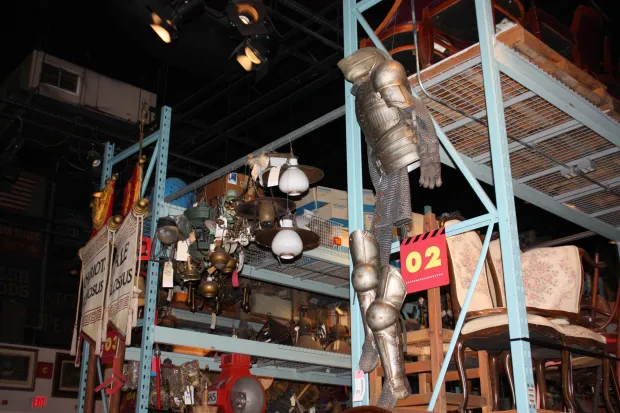
But living up to Walt Disney’s philosophy of his parks never being “finished”, Disney had shifted the park’s focus to one of full immersion, where guests could ”live their favorite movie moments.” Disney’s Hollywood Studios may no longer simulate a working studio lot, but it does offer guests a chance to become part of the story. And that is, ultimately, what Walt wanted to do when he envisioned Disneyland – the park that started it all.
Thanks for joining us backstage. Please follow along here for additional articles in this series. We’ll continue to explore many other former attractions and experiences from Walt Disney World, including Magic Kingdom, EPCOT, Hollywood Studios, and Animal Kingdom. We will also visit Disneyland and other Disney destinations!
Sources referenced in writing this article include:
Disney Wiki – Studio Backlot Tour
Backstage Studio Tour Featuring Catastrophe Canyon, Werner Weiss, 10/3/2014
Extinct Attractions: Walt Disney World’s Studio Backlot Tour, Cole Geryak, 1/30/2020
Attraction Archaeology: Studio Backlot Tour, Savannah Sanders, 1/11/2020
Wanna visit Disney’s Hollywood Studios and experience the magic of some favorite films firsthand? Now, more than ever, is a great time to use professional travel planning services when planning your next Disney trip. Facts and Figment Travel Planning can help you score the best discounts Disney has to offer, at Disneyland, Walt Disney World, Disney Cruise Line, Aulani, or Adventures by Disney. Please start here to begin. Our travel planning services are absolutely FREE, and we can help you score the best, hardest-to-get deals to make your vacation more affordable.
If you enjoyed this article, please feel free to share it with friends using one of the buttons below, or by copying/pasting the URL for this post. Also, please reach out with a comment, either here or on social media.
Follow Facts and Figment on social media: Instagram Facebook X (formerly Twitter)
